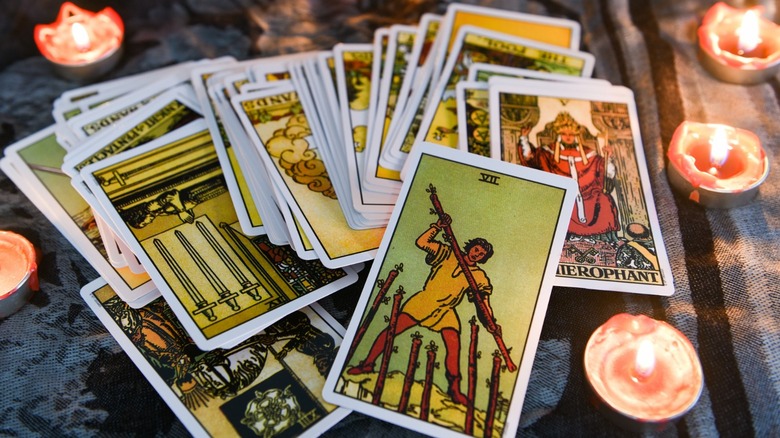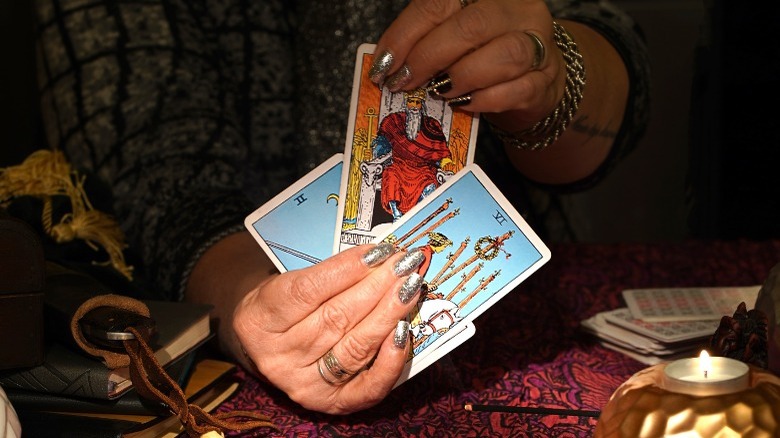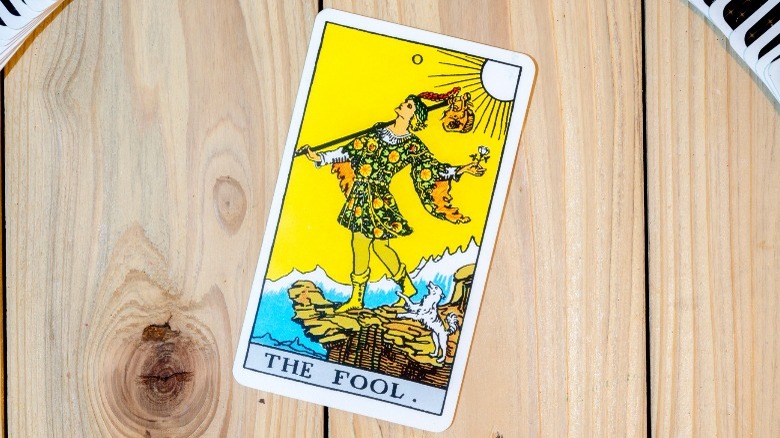What Does Major Arcana Mean In Tarot, And What Cards Are Part Of It?
Long before tarot was associated with the occult, it was just another ordinary card game. Tarot was first recorded in Europe in the 15th century, and as the cards were hand painted, they could only be purchased by wealthy families. Fast forward to the 1700s, and tarot became widely used to predict the future, when Frenchman Jean-Baptise Alliette released the first book on tarot card reading. Alliette gave all 78 cards a meaning and also attributed astronomical and elemental properties to each card, according to Bicycle Cards.
In 2021, tarot is considered to be one of the oldest forms of divination that is still practiced in modern times. In fact, tarot is not only still used today, but rapidly growing in popularity. Earlier this summer, Sylvia Plath's personal tarot deck even sold for $206,886 at a Sotheby's auction. And Plath was hardly the only writer or artist to be influenced by tarot. Author T.S. Eliot wrote about the cards, while painter Salvador Dalí actually created his own, according to the BBC.
The fact is that tarot has been intertwined with art and culture (both classic and popular) for a very long time. One facet of tarot that has been of especial interest to people throughout history is the major arcana cards. These cards are said to hold special meaning in tarot. Keep reading to find out more.
The major arcana are thought to be the face of tarot
A tarot deck is split into two parts: the major arcana cards and the minor arcana cards. The major arcana is a term for the first 22 cards of the deck (numbered 1-21, and one single unnumbered card), while the minor arcana represent the remaining 56 cards, which are split into four suits: Swords, Pentacles, Cups, Wands and Cups, per Mind Body Green Mindfulness.
The major arcana cards are as follows: The Fool (which is often unnumbered, but sometimes numbered as 0); 1, or the Magician; 2, or the High Priestess; 3, or the Empress; 4, or the Emperor; 5, or the Hierophant; 6, or the Lovers; 7, or the chariot; 8, or Strength; 9, or the Hermit; 10, or the Wheel of Fortune; 11, or Justice; 12, or The Hanged Man; 13, or Death; 14, or Temperance; 15, or The Devil; 16, or The Tower; 17, or The Star; 18, or The Moon; 19, or The Sun; 20, or Judgement; and 21, or The World (via Tarot).
These 22 cards are thought to be the most recognizable in a tarot deck. They are also the most impactful cards you can see during a tarot reading as they represent the monumental situations we all face throughout our lifetimes, according to Tarot. A major arcana card also acts as the big picture during a reading, with all the other cards centering around that specific card(s) meaning, according to Biddy Tarot.
The major arcana represents the Fool's journey
Tarot decks, as well as the major arcana, begin with The Fool. The Fool is thought to represent all of us at the beginning of a journey. In general, the fool is considered to be the protagonist of the whole tarot deck, but especially the major arcana. He is ever-present as he makes his way through life, and journeys through each of the major arcana cards, meeting new people and teachers, as well as learning new lessons, according to Biddy Tarot.
The Fool is depicted as a joyful young man who is a blank slate in terms of experience and character (sometimes seen as a symbol of innocence), per Labrynthos. Seeing The Fool in a reading can be symbolic of numerous things. If you see him in the upright positions, it can indicate new beginnings, opportunity, potential and faith. This card often represents undertaking a new journey. It also acts as encouragement to participate in said journey with an open mind and curious heart. If you see The Fool in the reversed position, it can mean that you aren't feeling quite ready to present a new project to the world. It might also indicate feelings of apprehension, or fear, as well as bad timing.
In general, The Fool is one of the most important cards in the major arcana (as well as the entire deck), and seeing this card in a reading is often a positive sign, according to Labrythos.


